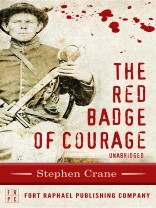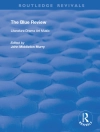An early classic of American literature, The Red Badge of Courage tells the story of private Henry Fleming, a young soldier in the Union Army, who flees the battlefield and later returns in shame, seeking to redeem himself by receiving a war wound – a “red badge of courage” – in the conflict.
Hailed for over a century as one of the finest war novels ever written, Crane’s tale is an early example of American Realism and Naturalism and, despite the author never having seen a battlefield, has been praised for its accurate and chilling portrait of war.
The Red Badge of Courage was an immediate sensation and soon became an international bestseller, cementing Crane as a celebrated literary talent at just twenty-four. It has gone on to become one of the most widely read and admired books of early American literature.
This unabridged version of the text also includes a brief biography of the author.
O autorze
Stephen Crane (November 1, 1871 – June 5, 1900) was an American poet, novelist, and short story writer who helped establish the Realist movement and was an early adopter of the styles of American Naturalism and Impressionism.
A writer at a very early age, Crane was in print multiple times before he was sixteen. He briefly attended – but then left – Syracuse University and soon began work as a reporter. He published his first full-length novel, Maggie: A Girl of the Streets, in 1983 which went on to be recognized as the first example of Naturalistic writing.
Two years later, Crane published the Civil War novel The Red Badge of Courage, which was an international hit praised for its realism and authenticity, despite Crane never having set foot on a battlefield.
Crane traveled to New York the following year to research a book on policemen and made the acquaintance of several young ladies who were working in the Tenderloin district, one of which was a prostitute named Dora Clark. After Clark was arrested for solicitation (the latest of several such arrests), Crane chivalrously testified on her behalf and the affair quickly turned into a very public scandal.
Soon afterwards, Crane traveled to Cuba as a war correspondent and, on the way to the Caribbean, met and befriended Cora Taylor, later recognized as the first female war reporter. Leaving Florida, Crane’s boat, the SS Commodore, sank and stranded Crane and his shipmates on a dinghy for thirty hours, an ordeal he recounts in his short work The Open Boat.
Crane and Taylor would later travel to Greece as war reporters and soon afterwards moved to England together, where Crane made the acquaintance of two of the literary titans of the late 19th century, H.G. Wells and Joseph Conrad, both of whom held Crane in high esteem.
Thereafter, Crane’s health and finances took a nasty turn and he ended his short life in a German sanitarium, dying there of tuberculosis at the age of twenty-eight.












